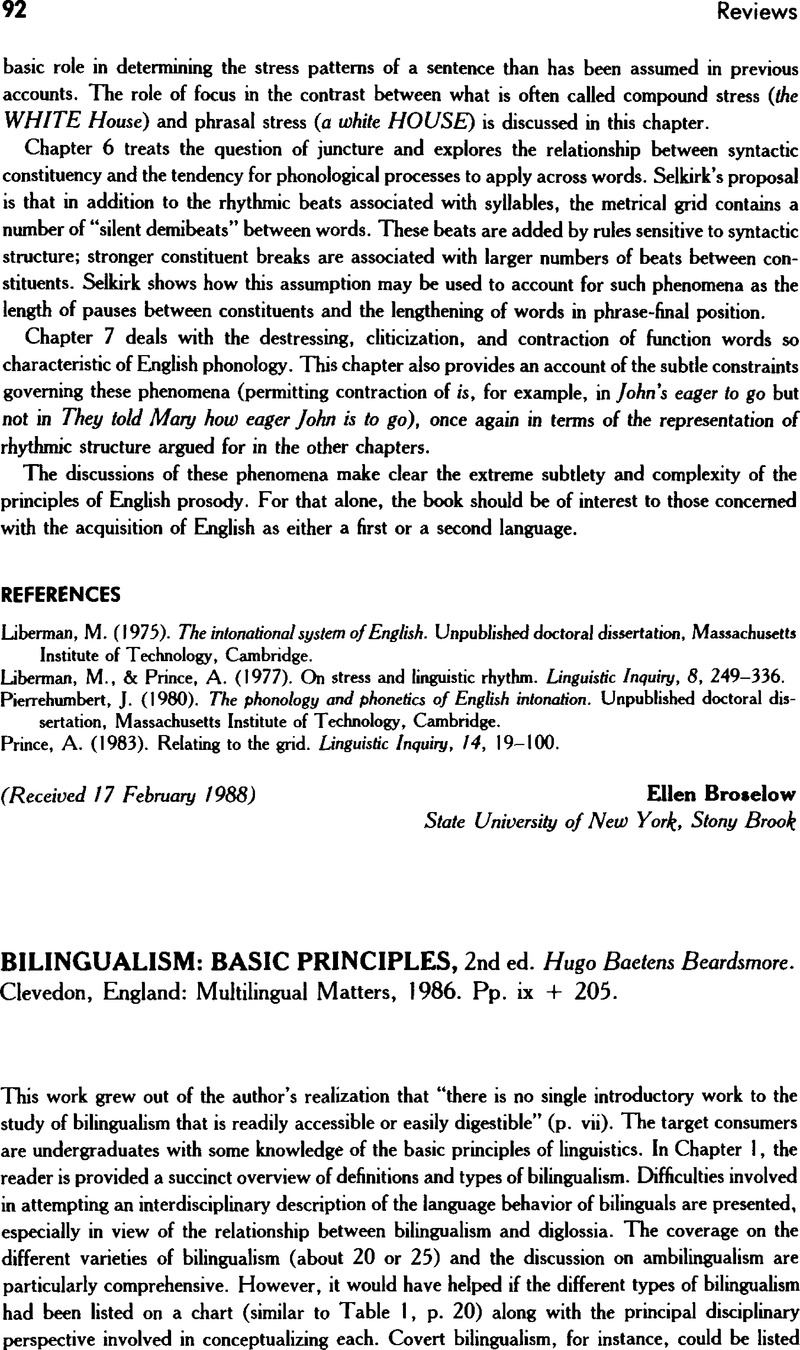No CrossRef data available.
Article contents
BILINGUALISM: BASIC PRINCIPLES, 2nd ed.Hugo Baetens Beardsmore. Clevedon, England: Multilingual matters, 1986. Pp. ix + 205.
Review products
BILINGUALISM: BASIC PRINCIPLES, 2nd ed.Hugo Baetens Beardsmore. Clevedon, England: Multilingual matters, 1986. Pp. ix + 205.
Published online by Cambridge University Press: 07 November 2008
Abstract
An abstract is not available for this content so a preview has been provided. Please use the Get access link above for information on how to access this content.

- Type
- Reviews
- Information
- Copyright
- Copyright © Cambridge University Press 1989
References
REFERENCES
Dulay, H. C., & Burt, M. K. (1972). Goofing: An indication of children's second language learning strategies. Language Learning, 22, 299–307.CrossRefGoogle Scholar
Gonzalez, G., & Maez, L. F. (1980). To switch or not to switch: The role of code-switching in the elementary bilingual classroom. In Padilla, R. V. (Ed.), Ethnoperspectives in bilingual education research: Vol. II. Theory in bilingual education (pp. 125–135). Ypsilanti: Eastern Michigan University.Google Scholar
Lambert, W. E. (1969, 05 5–11). Psychological aspects of motivation in language learning. Bulletin of the Illinois Foreign Language Teachers Association.Google Scholar
Macnamara, J. (1969). How can one measure the extent of a person's bilingual proficiency? In Kelly, L. G. (Ed.), Description and measurement of bilingualism (pp. 80–119). Toronto: University of Toronto Press.Google Scholar
McLaughlin, B. (1984). Second-language acquisition in childhood: Vol. I. Preschool children (2nd ed.). Hillsdale, NJ: Erlbaum.Google Scholar
Osgood, C. E., Suci, G. J., & Tannenbaum, P. H. (1957). The measurement of meaning. Urbana: University of Illinois Press.Google Scholar


